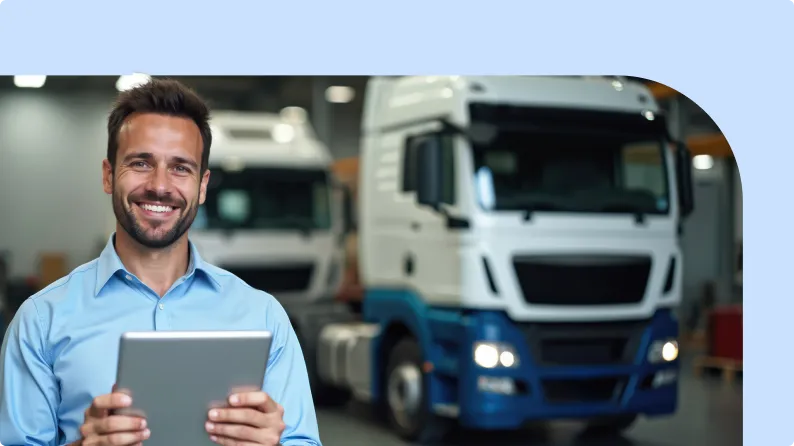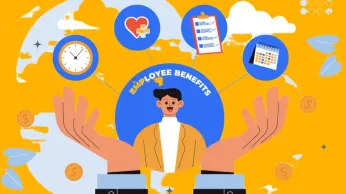How to Motivate Last-Mile Delivery Executives and Reduce Attrition
Last-mile delivery teams face intense pressure, high attrition, and burnout. This blog explores practical ways to engage, motivate, and retain them—through rewards, well-being programs, recognition, gamification, and platforms like Empuls.
On this page
The e-commerce boom has transformed customer expectations—and with it, the pressure on last-mile delivery operations has reached an all-time high. Today’s consumers don’t just want fast and affordable deliveries; they expect seamless, real-time, and reliable experiences at their doorstep.
Behind every successful delivery is a fleet of hardworking executives navigating traffic, weather, complex addresses, and tight timelines. But while logistics technology continues to evolve, the real challenge lies in engaging and retaining the last-mile workforce.
With high attrition rates, absenteeism, and burnout becoming the norm, it’s clear that businesses need to look beyond just operational efficiency. Motivating and supporting delivery executives isn’t just a people strategy—it’s a business imperative.
In this blog, we dive deep into the unique challenges faced by last-mile teams and explore proven ways to keep them engaged, productive, and loyal—through recognition, wellness programs, communication platforms, and technology like Empuls.
What do customers have to do with last-mile delivery?
Customers are the lifeline of any business. Customers' perception of your brand and what they think about your service can either make or break your organization.
In today's hyper-connected social media world, a single negative experience can be more impactful than one could imagine. That is why it has become crucial for logistics organizations to focus on positive customer experiences with every single delivery they make.
According to customer loyalty expert Ruby Newell-Legner, did you know that it takes 12 positive customer experiences to negate a single negative customer experience?
While talking about the importance of customer experience in the logistics industry, let's look at one of the instances at FedEx, one of the world's largest transportation companies.
An employee of FedEx Canada, while responding to a call from a distressed customer, understood that the package that the customer was expecting was delayed in transit. The box contained a unique baby formula, of which the customer was in immediate need.
The employee went out of her way to call health supply stores across the city, purchased the unique formula with her credit card, and expedited the customer's delivery before evening. Exceptional, isn't it?
While talking about this incident, President of FedEx Express Canada, Lisa Lisson, expressed how they create an inclusive and empowering environment for their last-mile delivery executives, which keeps them motivated and engaged in building better customer loyalty. This, in turn, helps them achieve exceptional customer experience time and again.
What is last-mile delivery?
As the name suggests, last-mile delivery refers to the last leg in the delivery process where the goods get delivered to the customer from the warehouse/hub.
Considered a differentiating factor in the logistics business, last-mile delivery is one of the most time-consuming and expensive parts of the whole shipping business.
Though the concept of last-mile delivery has existed for as long as we know, the growth and transformation that has taken place in the last decade or so has been phenomenal.
The traditional courier, parcel, and other last-mile logistics, which took four to six weeks earlier to be delivered, are not relevant anymore. People of today, especially millennials, expect delivery as quickly as the same day!
The last-mile delivery market accounted for a whopping $9.98 billion in the year 2018 and is expected to reach $45.27 billion by 2027, growing at a CAGR of 18.3% during the period 2018-2027
The delivery boom spurred by the upsurge of companies like Uber, Ola, Lyft, Amazon, Flipkart, TaskRabbit, Postmates, Swiggy, etc., has created a massive new sector of employment. Ranging from full-time employees to part-time “gig” workers to “hobbyists” who work for various reasons, the last-mile delivery sector has attracted a workforce from a wide range of demographics and age groups.
However, the process of last-mile delivery is not as easy as it seems. Like every other solution, there is a last-mile delivery solution.
Challenges of last-mile delivery executives
Any company that is involved in managing last-mile logistics understands that achieving an efficient and sustainable solution to the last-mile delivery challenges is a hard nut to crack.
Seamless last-mile delivery experience is more comfortable said than done. There are a number of last-mile delivery problems.
Last-mile delivery as a process can be extremely challenging and stressful to the workforce who are running from pillar to post each day to make deliveries as well. Even with so many technological advancements, the last last-mile delivery challenge seems to be advancing a tad bit faster than it is diminishing.
Here we break down and take a deeper look at some of the most common challenges delivery executives face:
1. Address and allocation issues
Many traditional logistics companies, to date, allocate jobs to deliver executives manually and also do a manual destination grouping. This not only leads to a lot of human errors but can also lead to misallocation of deliveries to executives.
Not just that, but in the modern-day urban context – with an increased number of gated communities, commercial hubs, and densely populated localities - the complexities of last-mile delivery cab become more challenging.
Poorly stated address quality, lack of proper directions/signage, poorly managed visitor management systems that restrict entry, etc. can make the delivery executive feel like he is chasing a never-ending maze.
2. Delivery density
Capacity and capability are like two sides of the see-saw when it comes to last-mile delivery. If you find a delivery executive who is exhausted, short of enthusiasm or energy at the end of the day, that is probably because the delivery density he has handled that day is beyond his capacity.
These can especially happen during the holiday/festive season when the demand for delivery is very high. The density problem quadruples the moment we add other factors like the size and weight of the shipments, mode of transport, weather and traffic conditions, etc. to the equation.
By implementing the right route optimization software, businesses can significantly improve their last-mile delivery operations, leading to happier customers and increased efficiency. Check this blog for the best suggestions on route optimization software.
3. Customer availability
Imagine how disappointing it can be to see locked doors or a guard who doesn’t want to accept the delivery after traveling miles, zipping through traffic, in the scorching heat, or pouring pain. That is precisely what a delivery executive faces every once in a while.
Customers not being available to receive delivery can pose several other challenges in the delivery chain – like- missed timelines, increased delivery executive efforts, missed targets, increased cost due to multiple trips, etc.
4. Meeting fulfillment timelines
One of the biggest challenges the delivery executives face is adhering to strict fulfillment timelines. Be it rain or shine, customers expect their delivery to happen on time, every time.
If missed, fulfillment timelines can have a direct impact on both customer experience as well as brand reputation.
And we all know, in today’s hyper-connected world, any negative customer experience is tweeted to the world as a whole before even the brand can respond or react to it. That is the reason, delivery executives face immense pressure to adhere to fulfillment timelines – and at times are penalized for missing the deadlines.
5. Handling returns and damaged goods
Many online businesses these days, including e-commerce, food delivery apps, etc. offer free returns on orders or rejection of orders in case of late deliveries. Many companies use e-commerce tools to drive sales and engage with customers better.
Though this empowers the customers and encourages them to order more and more, managing returns and damaged/rejected orders can be extremely challenging to the delivery executives as well as the businesses.
At the same time, the delivery executives face the challenge of thoroughly checking the condition of the returned goods, the reason for the return, etc. The businesses face the challenge of managing the warehouse space for returned/damaged products, increased logistics cost, increased inventory costs, etc.
In these challenging circumstances, and with a relatively new sector of the workforce, most employers face the task of effectively handling these challenges, while keeping the workforce motivated. Employers often find themselves in these challenges:
-> High attrition rate
So, what are the possible reasons for such a high attrition rate?
To start with, delivery executives are the ones who usually fall in the category of semi-skilled or unskilled laborers with or without high formal education. Most of these laborers are employed on a temporary or contractual basis–meaning their compensations are not very high either.
The first week of employment is extremely crucial and sees the highest rate of attrition – where delivery executives readily switch jobs to competitor firms for a hike as meager as Rs 200.
Not only does this have an impact on the morale of other employees, but also has financial implications in terms of re-hiring and training costs.
-> Increased absenteeism
Absenteeism is a common issue confronted by logistics managers daily. There can be some reasons for absenteeism of the delivery workforce–like stress, burnout, injuries, sickness, or a mere lack of motivation and engagement.
Whatever be the reason for absence, excessive absenteeism is a serious problem that can significantly impact both productivity and profitability.
-> Lost productivity
Organizations lose a lot of time and money when the delivery executives are under-motivated, absent or quit and bear the brunt of loss of productivity–where work doesn’t get done.
Especially in cases where delivery executives are absent without prior information or go absconding, a lot of time and effort is spent on finding replacements–and the chances are that they won’t be as efficient as the employees they are replacing in lost productivity.
While there is no single-point solution to managing all of these challenges, various techniques to attract, retain and motivate the delivery executives can go a long way.
From missed fulfillment targets to rising absenteeism, the pressures on last-mile delivery executives are real—and constant. These operational challenges can’t be solved by logistics tech alone. That’s where Empuls steps in.
Empuls is an employee engagement and benefits platform designed to help companies build a resilient, motivated frontline workforce. With built-in tools for real-time appreciation, employee communication, well-being support, and personalised rewards, Empuls ensures that your delivery teams feel seen, valued, and supported.
When your workforce feels recognised, they don’t just deliver packages—they deliver results.
Check out how Empuls enabled Swiggy to incorporate its Smiles Program for delivery executives:
Meet Shiv Kumar, a Delivery executive who shares his honest feedback on how he is able to make the most out of the Swiggy Smiles Program and feels motivated, unlike before.
The business impact of a disengaged last-mile workforce
While operational efficiency and technology play a key role in last-mile logistics, it’s the delivery workforce that ultimately determines customer satisfaction. A disengaged last-mile executive isn’t just a human resource issue—it’s a direct threat to your business performance.
Disengaged employees are more likely to miss shifts, delay deliveries, and handle packages with less care. This leads to increased customer complaints, poor ratings, and reputational damage—especially in today’s hyper-connected world where every negative experience can go viral. Worse, it triggers a costly cycle of attrition, rehiring, and retraining.
Here’s how disengagement impacts business:
- ❌ Higher attrition: Attrition rates of over 50% increase training and rehiring costs dramatically.
- ❌ Missed fulfillment SLAs: Absenteeism and low morale lead to delayed or failed deliveries.
- ❌ Declining customer satisfaction: Unmotivated employees are less likely to go the extra mile—literally.
- ❌ Increased logistics costs: Repeated deliveries, errors, and returns spike overall operational expenses.
Investing in employee motivation, recognition, and well-being—through platforms like Empuls—can help businesses reduce these risks and turn their workforce into a true competitive advantage.
Addressing the last-mile delivery challenge through employee motivation
While the last mile workforce is similar to the “mainstream/white collar” employees in several ways, research shows that they weigh certain aspects of their employment very differently. Factors like good salary, peer relationships, working conditions, job security can motivate them more than anything else.
Technology platforms built on proven tech models can help create an engaged and motivated workforce while addressing all challenges above.
Taking inspiration from the world’s best incentive program run by Uber, Compass has been built to help organizations digitize incentive programs of delivery executives with game mechanics, align them to targets, and provide error-free payouts on time to keep them engaged and motivated.
Now, let’s take a look at five critical factors that will help you address the last-mile delivery challenge and keep them motivated and engaged.
1. Rewards and recognition
People feel motivated and engaged when they are appreciated for the excellent work that they do. More so, in the case of the last mile executives considering the nature of their job, i.e., when motivated to perform better, the number of deliveries has a direct impact and thus the company performance.
Building an organizational culture that continually strives to recognize their workforce and keep them motivated will go a long way in boosting morale and improving overall productivity. Rewards can help you in understanding how to motivate delivery executives.
Rewards can be shared in many forms, including delivery excellence rewards instant reward delivery. The various forms of rewards are:
-> Monetary rewards
From giving away cash rewards to employees who achieve their daily/weekly/monthly targets to quarterly bonuses, timely salary hikes to Holiday premiums, monetary rewards can come in many different ways. Whatever means you choose, keep in mind that financial rewards can be more robust to motivate the last mile workforce than any other form of rewards.
-> Tangible rewards
These are the rewards that your workforce can carry back with them – be it a company-branded gear, a trophy, an expensive gift like a camera/mobile phone to a not so costly fruit basket. It can be practically anything that will make the employee feel proud to flaunt.
-> Experience rewards
Rewards like attending company-sponsored events, dinner with the company’s senior executives, movie time with other achievers, fully/partially paid vacations, etc., that let them experience new and exciting things can have a profound impact on productivity.
2. Learning & development
Nobody wants to be stuck in a job where they don’t learn anything or have an opportunity to grow, and that is why learning can be essential in motivating your workforce. Though motivation can mean different things to different people, the urge to grow is universal.
Invest in learning programs for your workforce and encourage them to learn new skills, the local language, etc. Make them eligible to take up partially/entirely sponsored courses that will help personal development.
Define a clear career path that will help them see growth in the organization. These initiatives engage the employees and have a significant impact on the longevity of their employment.
3. Health & wellness
The last mile workforce continually being on the move are at high risk for a wide range of health problems–like stress, hypertension, heart diseases, etc. On the flip side, employers need their last-mile delivery executives to stay healthy and work longer to provide higher delivery capacities and reduce absenteeism.
Encouraging employee wellbeing by offering them regular health checks insurance coverage (employee & family) can be a way to start.
While this takes care of the physical health of employees, providing them with financial aid in times of need supporting them with required counseling (professional and personal) can address their economic and psychological health needs.
4. Technology to engage & communicate
Using a technology platform that will establish a clear communication channel between you and the last mile workforce can be highly beneficial in keeping them engaged.
While it gives you the means to keep them updated with what’s happening within the organization, what’s coming up (like a big sale that increases delivery volumes), it will give them a platform to share their thoughts, ideas, concerns, etc.
Not just that. Since the last mile workforce is extremely mobile and mostly works in isolation, they can quickly feel isolated and disconnected.
A communication platform will help them connect and interact with their peers, bringing a sense of belonging - like they are not alone and a part of a larger team achieving higher goals.
5. Gamification
Humans, by nature, are competitive. Competition always inspires greater efficiency and performance. Whether publishing Leaderboards, announcing “Daily Champions,” or merely publishing personal achievement levels, gamification thrives on human nature to socialize, exhibit triumph, and be recognized amongst peers.
With last-mile delivery executives being rated for speedy delivery to being awarded for completing a higher number of deliveries in a stipulated time, gamification has practically revolutionized the last mile logistics industry.
Empower and retain your last-mile workforce with empuls
Managing a motivated and engaged last-mile delivery workforce is one of the most pressing challenges for logistics and e-commerce businesses today. High attrition, absenteeism, and lost productivity can significantly impact delivery timelines and customer satisfaction.
That’s where Empuls steps in—as an all-in-one employee engagement and benefits platform designed to uplift and retain your frontline teams.

Empuls helps organisations like Swiggy, among others, drive employee motivation by offering personalised rewards, instant recognition, communication tools, and wellbeing benefits—tailored specifically for deskless and gig workforce environments.
Here’s how Empuls supports last-mile teams:
- Seamless rewards and recognition: Empuls enables real-time, peer-to-peer, and manager-led appreciation for on-time deliveries, customer satisfaction, and milestone achievements—boosting morale and performance.

- Engagement-led communication: Through a mobile-friendly social intranet, delivery executives stay connected, receive updates, and feel included—even when they’re constantly on the move.

- Perks and tax-saving benefits: Give your last-mile workforce access to exclusive perks, lifestyle discounts, and flexible benefits that improve their financial wellbeing—without increasing salary overheads.

- Health and wellness support: Provide physical, emotional, and financial wellness tools through Empuls’ wellbeing hub—designed to support the demanding nature of last-mile work.
- Data-driven engagement insights: Use employee feedback surveys and dashboards to measure satisfaction, identify attrition triggers, and build a better workplace experience.

With Empuls, organisations can reduce attrition, improve motivation, and create a culture of recognition and care—essential for optimising last-mile operations and delivering consistent customer experiences. Discover how Empuls can transform your delivery workforce experience.
Closing thoughts
Optimizing the last mile logistics depends on how motivated the workforce is. The more motivated the employees are, the better will be their performance.
Factors like rewards & recognition, including delivery excellence rewards, instant reward delivery, establishing secure communication channels using technology platforms, encouraging learning and development, taking measures to improve the health and wellness of employees, gamification, etc. can have a profound impact on motivating and engaging the last mile workforce.
Compass is an enterprise-class product that has been helping organizations across the globe digitize and gamifying the goals and behaviors of gig-workforce and bringing in double-digit cost efficiencies.
Leading logistics/internet companies across the globe trust Compass to increase the number of deliveries per agent (or activities), control attrition, minimize absenteeism, and influence positive customer ratings, thus improving their ROI.















